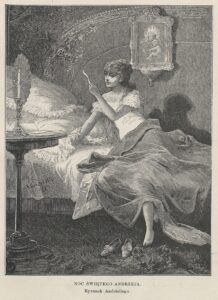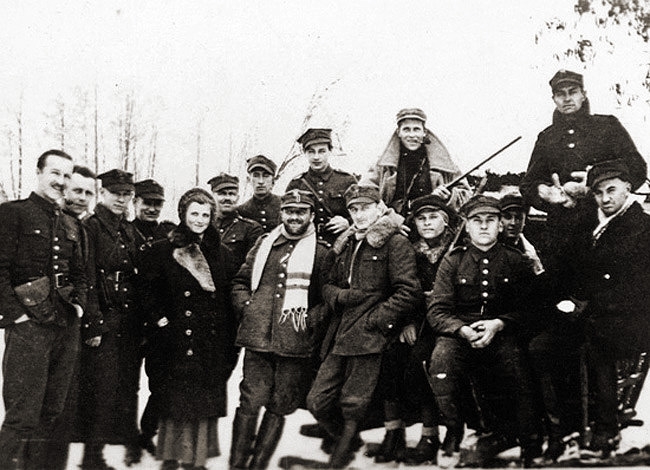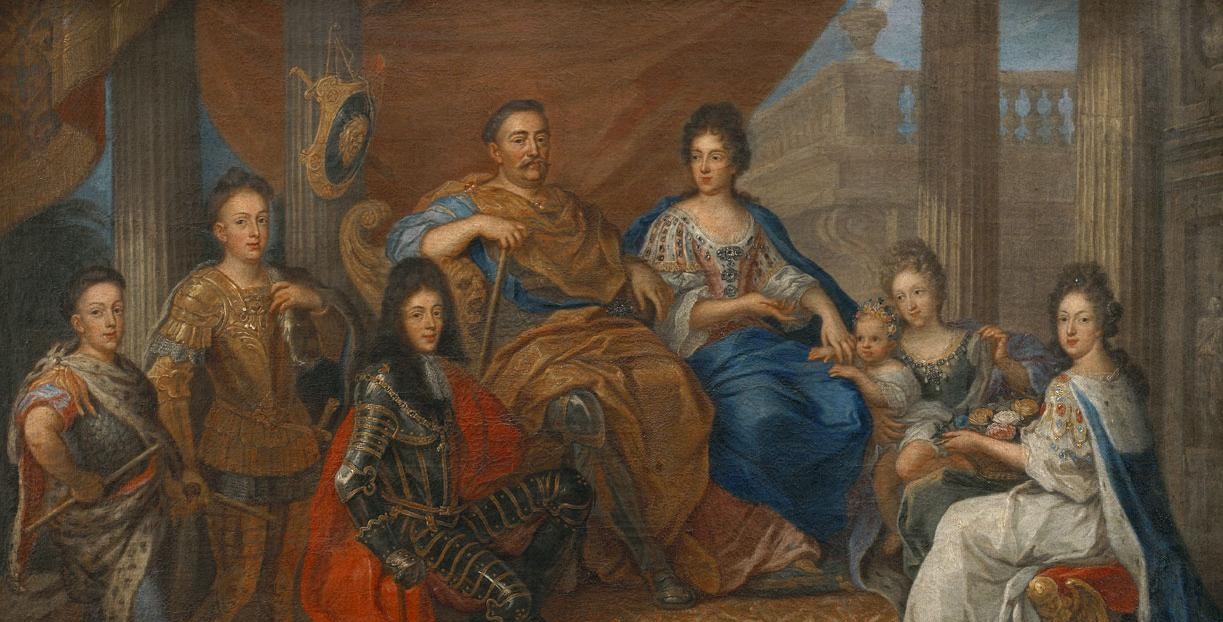St. Andrew’s Day falls on November 30, but in Old Poland the night before (St. Andrew’s Night) was considered a time of magic and fortune telling. In this period, it was believed that everything predicted on this night would come true. As a result, in nearly every noble manor and peasant cottage, fortune-telling sessions were organized to learn about the future.
by Anna Wójciuk
The origins of St. Andrew’s Day
The tradition of divination on the night before St. Andrew’s Day has its roots in the pre-Christian era and the figure of St. Andrew. The practice of fortune telling dates back to pagan times when people sought deeper meaning in the smallest signs that could influence the future. These signs included such things as the number of pickets in a fence, the sounds and behavior of animals, or the words used during a conversation. Fortune telling was primarily focused on matters such as marriage, good health and abundant harvests.
Following the baptism of Poland’s King Mieszko I, a clash between folk customs and religious traditions appeared. Pagan rituals were sometimes intertwined with Christian rites in various ways. In the case of St. Andrew’s Night fortune-telling sessions, it’s important to note that St. Andrew was an apostle and a key figure in spreading the Christian faith. The church chose him as the patron saint of fishermen, sailors, water carriers, miners and butchers. Additionally, he is the patron saint of women preparing to be married and of marriage itself. Thus it was believed in the past that St. Andrew watched over the matrimonial fortune telling that took place on the night before his feast day on November 30.

In Old Poland, there was a strong societal belief that it was the duty of every woman and every man to marry. Remaining single, whether as a spinster or bachelor, was viewed as a violation of the natural order and an unsuccessful life. Consequently, people looked forward to finding out about their future spouse. To aid in the search for a suitable partner and to hasten the path to wedlock, St. Andrew was invoked through prayers and fortune-telling practices. It was believed that the special power of predicting one’s marital future was most effective on the day celebrating this apostle. Moreover, Advent was soon to begin, a period during which fortune-telling was forbidden. In this way, St. Andrew’s Night was an ideal time for both prayer and divination.
It is important to note that according to the Old Polish tradition, only virgins participated in fortune-telling sessions on St. Andrew’s Night, in the hopes of finding their future husband quickly. Married women, on the other hand, could only assist with preparations and interpretation of the fortune telling. Men were strictly forbidden to participate in these divination activities. Bachelors seeking to meet their chosen one, often practiced divination on St. Catherine’s Day, which falls on November 24.
A St. Andrew’s Day of Unusual Prophecies
In Old Poland, there was a strong belief in fortune telling and the power to predict the future. As a result, many people eagerly participated in these practices. Almost all unmarried women took part in the divination sessions on the night dedicated to St. Andrew. Fortune-telling was typically a group activity, and maidens would gather in designated rooms in groups ranging from several to a dozen people.
The most popular form of fortune telling involved pouring wax. This practice typically started with melting wax (sometimes tin or lead) and then pouring it through a keyhole into a bowl of cold water. After the wax had cooled and hardened, the resulting shape was removed, and its shadow was carefully observed. The shape of the shadow was then interpreted to predict the characteristics of the future spouse, e.g. a shadow resembling a windmill predicted that the future husband would be a miller.

Another divination also used melted wax, zinc, or lead. In this case, the melted material was poured onto the surface of the water, and the substances were poured out from both ends of the bowl. After solidification, the movements and positions of the resulting shapes were carefully observed. Shapes approaching each other predicted a bachelor and the upcoming wedding, while shapes moving away from each other were interpreted as an unfortunate future as a spinsterhood.
It was also common to burn shreds of a distaff. As the pieces were engulfed by fire, they would fly upwards. If two of these burning shreds connected, it heralded lasting and fiery love. Another method involved throwing two needles attached to nutshells into the water. If the needles floated together and came into contact on the water’s surface, an announcement of an imminent marriage was predicted.
The future was also predicted by hiding various objects representing specific symbols under plates that were then chosen by participants. Ribbons and caps symbolized marriage, while a rosary and a prayer book predicted a spiritual life in a convent. A small doll symbolized an illegitimate child, and a leaf was a sign of spinsterhood. This form of fortune telling aroused fear among women, so they often skipped it or performed it in a different form. Instead of using physical objects, they hide pieces of paper with the name of their potential future husband under their plates.
Regarding St. Andrew’s Night fortune-telling, it’s worth mentioning the tradition involving cherry branches. On St. Andrew’s Night, early in the morning, young maidens would search for a cherry tree, pick a few twigs, take them home, and place them in water. They would carefully observe the branches, and if one of the branches bloomed by Christmas, the bride could rejoice: the wedding was near.

Unmarried women were not only interested in getting married, but also desired to be the first among their peers to tie the knot. Fortune-telling with shoes was supposed to help them discover the first and happiest future bride. The procedure involved the girls removing one of their shoes and arranging them in a row, one behind the other. Subsequently, each woman took turns advancing her shoe (with the last shoe being moved to the first place). The shoes were moved in this manner until they reached the door of the room. The owner of the shoe that touched the door threshold first was believed to be the next to marry. Conversely, touching the threshold with the heel of the shoe was seen as a dire omen, indicating a delay in finding a spouse for the unfortunate individual.
In some households, fortune-telling was performed with live animals which required careful preparations in advance. However, the complex process did not discourage anyone, because this fortune-telling, like the shoe-changing fortune-telling, was supposed to show which bride would be the first to marry. The procedure began by choosing an animal, followed by the preparation of bait. If a rooster was chosen for fortune telling, grain was prepared, while opting for a dog or cat required a piece of meat or sausage. Each maiden taking part in this fortune-telling placed her bait on a bench or the floor under her feet. Then the chosen animal was introduced into the room and the woman whose bait was eaten first was believed to be the first among them to get married.
The night dedicated to celebrating the deeds and patronage of St. Andrew was also a time of fervent prayers by women waiting to meet their suitors.

Prayers to St. Andrew
On the night commemorating their patron saint, the virgins engaged not only in fortune telling, but also in fervent prayers. Women ready to be married prayed to St. Andrew, to ask him to send them a prophetic dream. They implored that their dreams would not be disturbed by wandering spirits, but rather filled with the figure of their future husbands. Moreover, they begged the Apostle for the gift of a good, loving, faithful, and helpful spouse.
Former maidens were excessively curious about the characteristics of their future husbands, so their prayers and requests were quite detailed. Many women, praying to St. Andrew, wanted to know the name of their future spouse, his appearance, character, and even his profession. Moreover, they asked about their chances of reciprocated love and offspring.
To ensure that St. Andrew could fulfill their request to meet their future husband, a man’s shirt or other men’s clothing would be placed under their sheets. Additionally, they would place a bowl of water near their beds, with a makeshift bridge made from sticks floating on the water’s surface. Women who were expecting a husband believed once they built this carefully prepared bridge, a dream about the man of their dreams would come.

St. Andrew’s Day in the past and today
In Old Poland, November was regarded as a month imbued with magic and the potential for contact with spirits. The increased possibility of encounters with the deceased was attributed to two factors: the observance of All Souls’ Day took place in November, and, in accordance with old Polish beliefs, that ghosts descended to Earth at the end of the year to visit their loved ones. These meetings were seen as an opportunity to learn about one’s future. The community of this era deeply believed that the spirits of the departed used various signs to warn them about coming misfortunes or to simply to show them their path in life. The combination of these beliefs in supernatural powers with the celebration of the patron saint of marriages created an ideal occasion for fortune telling.
Nowadays, All St. Saint’s Day and All Souls’ Day are still celebrated in November. St. Andrew’s Day has also become a permanent part of the calendar, albeit with some variations. In the past, St. Andrew’s Day fortune-telling was treated very seriously, but today it is considered more of a game in which both women and men participate. While the option to consult fortune tellers still exists, it is not as popular as it used to be. So now on St Andrew’s Day, people gather with family, friends and acquaintances to enjoy quality time together, and fortune-telling has evolved into a lighthearted and enjoyable pastime.
Author: Dr Anna Wójciuk
Translation: Alicja Rose & Jessica Sirotin





